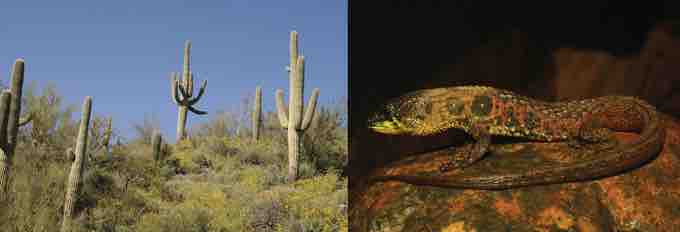Introduction: Evolution
All species of living organisms, including bacteria and chimpanzees, evolved at some point from a different species. Although it may seem that living things today stay the same, this is not the case: evolution is a gradual and ongoing process.
The theory of evolution is the unifying theory of biology, meaning it is the framework within which biologists ask questions about the living world. The Ukrainian-born American geneticist Theodosius Dobzhansky famously wrote that "nothing makes sense in biology except in the light of evolution." The tenet that all species have evolved and diversified from a common ancestor is the foundation from which we approach all questions in biology. It provides a direction for predictions about living things, which has been validated through extensive scientific experimentation.
Evolution by natural selection describes a mechanism for the change of species over time . Well before Darwin began to explore the concept of evolution, the idea that species change over time had already been suggested and debated. The view that species are static and unchanging was grounded in the writings of Plato, yet there were also ancient Greeks who expressed ideas about evolution. During the eighteenth century, ideas about the evolution of animals were reintroduced by the naturalist Georges-Louis Leclerc Comte de Buffon who observed that various geographic regions have different plant and animal populations, even when the environments are similar. It was also accepted that there are extinct species.

Evolution by Natural Selection
All organisms are products of evolution adapted to their environment. (a) Saguaro (Carnegiea gigantea) can soak up 750 liters of water in a single rain storm, enabling these cacti to survive the dry conditions of the Sonoran desert in Mexico and the Southwestern United States. (b) The Andean semiaquatic lizard (Potamites montanicola), discovered in Peru in 2010, lives between 1,570 to 2,100 meters in elevation and, unlike most lizards, is nocturnal and swims. Scientists still do not know how these cold-blood animals are able to move in the cold (10 to 15°C) temperatures of the Andean night.
During this time, a Scottish naturalist named James Hutton proposed that geological change occurs gradually by the accumulation of small changes over long periods of time. This theory contrasted with the predominant view of the time: that the geology of the planet is a consequence of catastrophic events that occurred during a relatively brief past. During the nineteenth century, Hutton's views were popularized by the geologist Charles Lyell, who was a friend of Charles Darwin. Lyell's ideas, in turn, influenced Darwin's concept of evolution. The greater age of the earth proposed by Lyell supported the gradual evolution that Darwin proposed, and the slow process of geological change provided an analogy for the gradual change in species.
In the early nineteenth century, Jean-Baptiste Lamarck published a book that detailed a different mechanism for evolutionary change. This mechanism is now referred to as an inheritance of acquired characteristics. This idea states that modifications in an individual are caused by its environment, or the use or disuse of a structure during its lifetime, and that these changes can be inherited by its offspring, bringing about change in a species. While this mechanism for evolutionary change was discredited, Lamarck's ideas were an important influence on the concept of evolution.